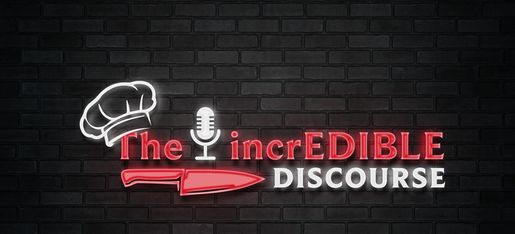Savor the flavor

The incrEDIBLE Discourse Unleashed
Mastering Heat Control: The Key to Cooking Like a Pro
Introduction
One of the most important yet often overlooked skills in cooking is controlling the heat. Understanding how heat interacts with different foods is the difference between a beautifully seared steak and a dry, overcooked disaster. Whether you’re pan-searing, roasting, simmering, or reducing a sauce, heat control is what separates good cooks from great chefs.
This guide will dive deep into:
The science of heat and how it affects food
When to use high, medium, or low heat
Common mistakes and how to avoid them
Pro techniques for heat management in different cooking methods
If you want to elevate your cooking and develop chef-level intuition, mastering heat control is a non-negotiable skill. Let’s turn up the heat!
Understanding Heat & How It Cooks Food
Heat transforms raw ingredients into something delicious by changing their texture, flavor, and structure. There are three main ways heat transfers in cooking:
Conduction: Direct Contact Heat
What It Is: Conduction is when heat moves directly from one surface to another—like when you sear a steak in a hot pan or toast bread on a griddle.
Best Used For:
Searing meats (steak, duck breast, fish fillets)
Sautéing vegetables
Grilling
Cooking pancakes and flatbreads
Pro Tip: Always preheat your pan before adding food to ensure even cooking and proper browning. A properly preheated pan means less sticking and better caramelization.
Convection: Hot Air Circulation
What It Is: Convection happens when heat moves through the air or liquid. Think of the circulating air in an oven or deep fryer, or the movement of boiling water in a pot.
Best Used For:
Roasting meats and vegetables
Baking bread and pastries
Deep frying (oil convection transfers heat to food)
Simmering and boiling
Pro Tip: For the crispiest roasted veggies, use a convection oven setting (fan-forced) to circulate air evenly around the food, eliminating hot spots.
Radiation: Heat Without Direct Contact
What It Is: Radiation transfers heat through waves rather than direct contact—like when you broil a steak under high heat or cook over an open flame.
Best Used For:
Broiling (melting cheese, finishing steaks)
Grilling over an open flame
Using a torch for caramelization (crème brûlée, finishing meats)
Pro Tip: Keep a close eye on food when using radiant heat! It can burn quickly if not monitored.
Heat Levels & When to Use Them
Understanding when to use high, medium, or low heat is one of the most critical cooking skills. Here’s a breakdown:
High Heat (400°F and above)
Best For: Searing, grilling, broiling, stir-frying
Why It Works: High heat quickly browns food through the Maillard reaction, creating deep flavors and a crispy crust.
Common Mistakes:
- Overcrowding the pan, which drops the temperature and causes steaming instead of searing.
- Using high heat for too long, leading to burnt exteriors and undercooked interiors.
Pro Tip: Let your steak rest at room temperature for 20-30 minutes before searing. Cold meat hitting a hot pan causes uneven cooking.
Medium Heat (300°F - 400°F)
Best For: Sautéing, pan-frying, simmering
Why It Works: Medium heat allows for controlled cooking and gradual caramelization without burning.
Common Mistakes:
- Not adjusting the heat while cooking (medium heat may need to be lowered if ingredients start browning too quickly).
- Using low-quality cookware, which leads to uneven heat distribution.
Pro Tip: For perfect sautéed onions, cook them on medium-low heat for 15-20 minutes. Rushing with high heat leads to burning instead of caramelization.
Low Heat (Below 300°F)
Best For: Slow cooking, braising, simmering sauces
Why It Works: Low heat gently breaks down proteins and fibers, creating deep, rich flavors over time. Common Mistakes:
- Not being patient! Slow cooking takes time but rewards you with tender, flavorful food.
- Not deglazing the pan: After slow-cooking meats, always deglaze with wine, stock, or vinegar to lift the flavorful brown bits (fond) from the bottom.
Pro Tip: When simmering sauces, don’t let them rapidly boil—keep the heat low to develop deep flavors without scorching.
How to Adjust Heat Like a Pro
Preheat your pan before adding food – cold ingredients hitting a cold pan = disaster.
Use your senses – listen to the sizzle, smell for browning, and watch the color of food changing.
Cook in stages – start on high for a crust, then lower the heat for even cooking.
Control heat sources – gas stoves heat faster than electric, so adjust accordingly.
Learn your cookware – cast iron retains heat longer, while stainless steel heats up quickly but cools fast.
Chef’s Secret: Always let meat rest after cooking. The heat inside continues to carry over, finishing the cooking process without direct heat.
Final Thoughts: Heat Control Makes the Difference
Great cooking isn’t just about ingredients—it’s about how you apply heat to those ingredients. Mastering heat control means knowing: When to use high, medium, or low heat How heat affects texture and flavor How to adjust heat throughout the cooking process
Whether you're searing a steak, roasting vegetables, or simmering a sauce, heat control is your secret weapon to creating restaurant-quality food at home. Now, go cook like a pro!
Next Steps
Try these heat control techniques in your next dish!
Subscribe to The IncrEDIBLE Discourse podcast for more pro cooking tips.
Visit theincrediblediscourse.com for more recipes, guides, and insights.
Cook smarter. Cook better. Cook with control!
Copyright © 2025 The incrEDIBLE Discourse - All Rights Reserved.

Level Up Your Cooking
Join The Monthly Mise
Chef-level tips. Real lessons. Zero fluff.
This website uses cookies.
We use cookies to analyze website traffic and optimize your website experience. By accepting our use of cookies, your data will be aggregated with all other user data.